Top speed 170 km/h Length 8.35 m | Wingspan 16 m Manufacturer SNCAN | |
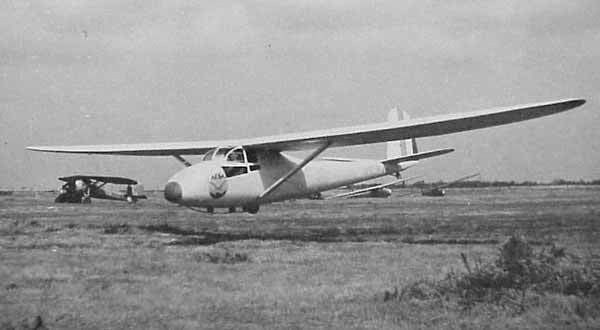 | ||
The Caudron C.800, at first also known as the Epervier (English: Sparrowhawk) is a French two seat training glider, designed and first flown during World War II and put into large scale post-war production. It was the dominant basic training glider with French clubs until the 1960s and several still fly.
Contents
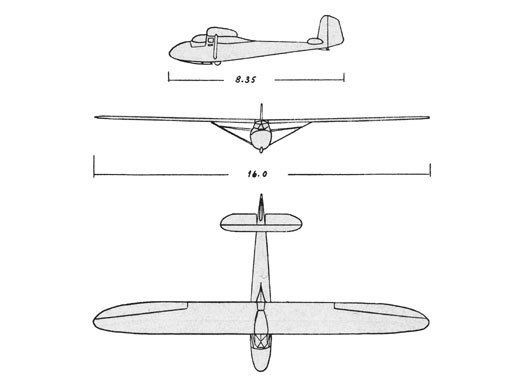
Design and development
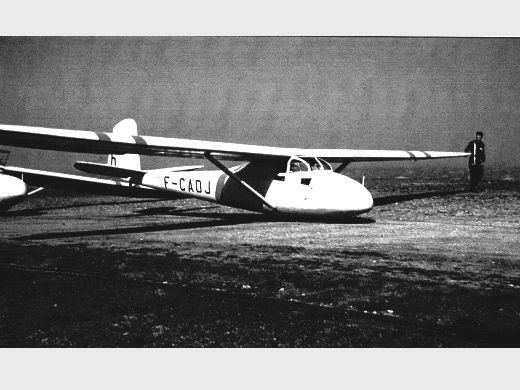
Design of the Caudron C.800 began soon after the Franco-German Armistice of June 1940, proceeding in parallel with that of the Castel C.25S. Both aircraft were intended to increase the number of machines available for recreational gliding in the southern, unoccupied region of France. Its wood framed, fabric covered high wings are braced from below with short and quite broad chord faired struts, one on each side, from the lower fuselage to the constant chord wing centre section. Outboard the wing panels taper roughly elliptically, with obliquely hinged ailerons filling their whole trailing edges.

The fuselage is a plywood covered wooden monocoque with an oval cross section; the is wing mounted at the highest point immediately behind the cockpit, which places instructor and pupil in side-by-side seats ahead of the leading edge, equipped with dual control and covered by a short, upward opening, rear hinged, multi-piece canopy. There is another pair of opening fuselage transparencies immediately below the canopy. Behind the wing the fuselage tapers, initially quickly, to the tail where the narrow chord, round tipped tailplane is mounted, with some dihedral, on top of it. The broader, split elevators are ahead of a straight edged, blunt tipped narrow fin and wide rudder. Like the wings, the empennage is wood framed and fabric covered. The monowheel undercarriage is assisted by a sprung, wooden skid reaching forwards from the wheel to the nose, and by a tail skid.
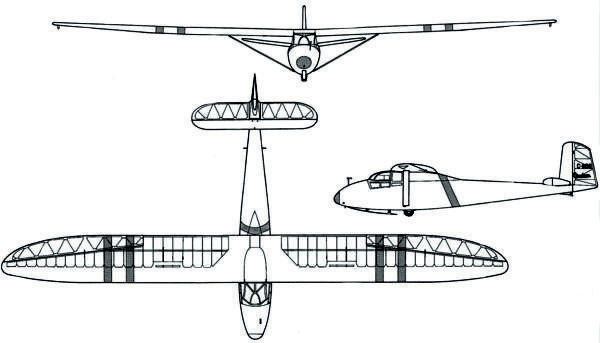
Two prototype C.800s were flown during World War II, the first in April 1942. A single-seat version, the C.810 was also flown in 1942 but these two prototypes were destroyed by bombing. An improved single-seat variant, the C.811 was flown after 1945 but not developed; it was seen by the French Air Ministry as too similar to existing types such as the Grunau.
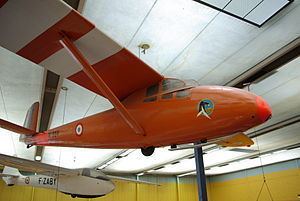
In 1951 an improved version of the C.800 named C.801 was designed by Raymond Jarlaud. This had a reinforced structure, an enlarged rudder and balanced ailerons. Cockpit visibility was improved by simplifying the frames with more curved glazing and ground handling was made easier by moving the monowheel forward.
Operational history
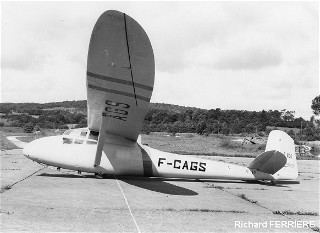
After the liberation of France in 1944, the French government ordered 450 as part of an effort to revive French aviation, though this was later reduced to 248. Production of 300 began in 1945 at the Aire-sur-Adour factory of the Fouga company, by then part of SCAN. Most went to civil gliding clubs becoming, along with the Castel C.25S, the national standard two-seat trainer type until their replacement by the Wassmer WA 30 Bijave in the early 1960s. It remained an important club stalwart for twenty years after its introduction. Some were operated by the French Air Force and Aéronavale.
Ten C.801s were built at Aire-sur-Adour but were withdrawn from use in 1957 on safety grounds.
In 2010 six C.800s remained on the French civil aircraft register and one on the Dutch.
Variants
Aircraft on display
Data from Aviation Museums and Collections of Mainland Europe. C.800s are on public display at
Specifications (C.800)
Data from The World's Sailplanes:Die Segelflugzeuge der Welt:Les Planeurs du Monde
General characteristics
Performance
